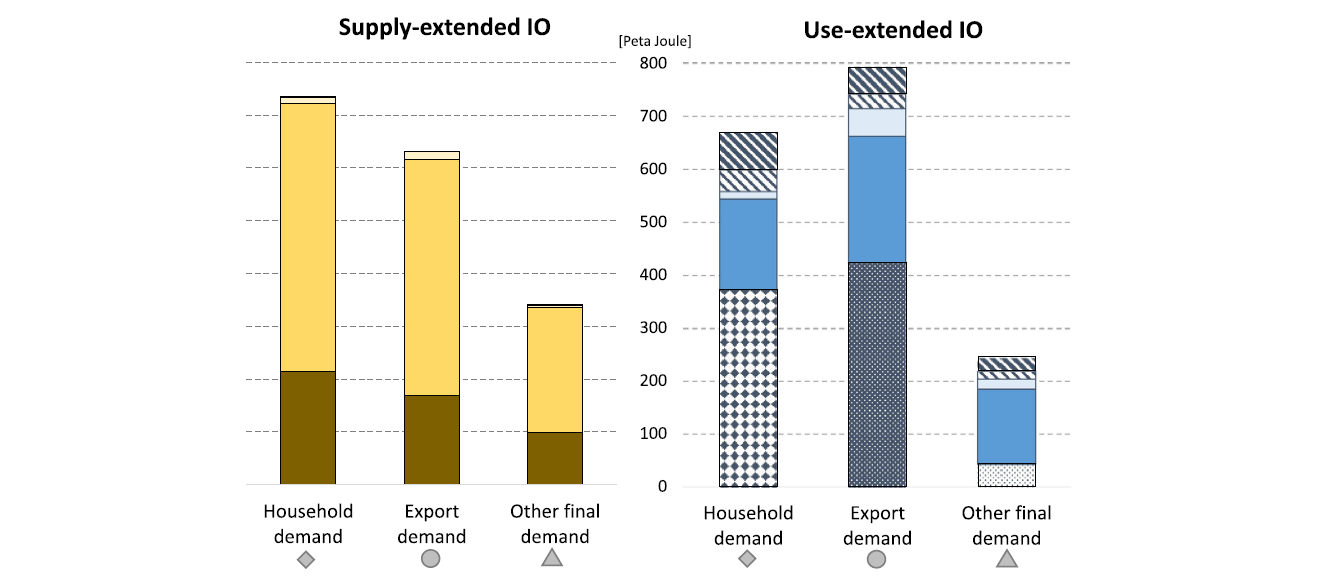Different ways of using energy data in input-output models
Input-output analysis is a widely applied method to assess environmental pressures along supply chains and to calculate the environmental consequences of final consumption of products and services. Using energy data in input-output models has a long tradition and there are different ways to extend the information in monetary input-output tables with data from energy accounts. These different approaches can have significant impacts on the calculation results. In this study, we compared two generally used approaches to connect data from energy accounts to input-output models: one puts a focus on those sectors that extract and supply energy (e.g. coal mining, oil extraction), the other shows the energy use of different sectors (e.g. manufacturing or transport sectors).
Significant deviations of results
The results of our study show that integrating energy data from an energy supply versus an energy use perspective can lead to significant deviations in the results, when calculating energy footprints. For example, in the investigated case of Austria, households have the highest energy footprint in the energy supply perspective, whereas exports show the highest energy footprint in the case energy use data are applied. We also show that the energy footprints of certain economic sectors can vary by several orders of magnitude depending on how the energy data is compiled.
Calling for methodological transparency
We conclude that researchers should be very explicit in communicating and disclosing their approach on how they link environmental data to monetary input-output tables. This information is required to allow a meaningful interpretation of results, greater transparency and better reproducibility.



